We hit the range to test out Wilson Combat’s high-performance D77 Project 1 pistol, also known as the P1.
The P1 pistol is the newest firearm from Wilson Combat, but to fully appreciate this gun, some history is in order.
In 1977, a competitive handgun shooter from Berryville, Arkansas—who just happened to be a watchmaker by trade—started building custom 1911 handguns. Bill Wilson was a good jeweler and a good shooter, and he became one of the most recognized and best modifiers of the 1911 platform. As Wilson told Gun Digest in an interview in 2020, “As I became a high-level competitor, I needed a better pistol, and when guns from the top pistolsmiths of the day did not satisfy me, I used my jewelry and watchmaking skills to work on 1911s.”
And Wilson did make them better.
In fact, his 1911s were so much better that they became highly sought after.
Wilson said, “My goal was always to build the best product I could, charge what I had to in order to make a living, and to take care of my customers with a forever customer satisfaction policy. I knew if I did this, everything else would work out fine.”
Now, almost 50 years later, Wilson has transformed the little gun customizing shop in the back of a jewelry store into the largest and most respected custom firearms manufacturing company in the world.
Wilson is no longer at the helm of Wilson Combat. He’s handed the reins of the company over to Cam Ankele. Wilson spends his time on his ranch in Texas, hunting, conducting R&D and providing technical guidance for Wilson Combat. Ankele, on the other hand, is hard at work to elevate Wilson Combat to even greater heights, and one of the projects he has inspired is Division 77.
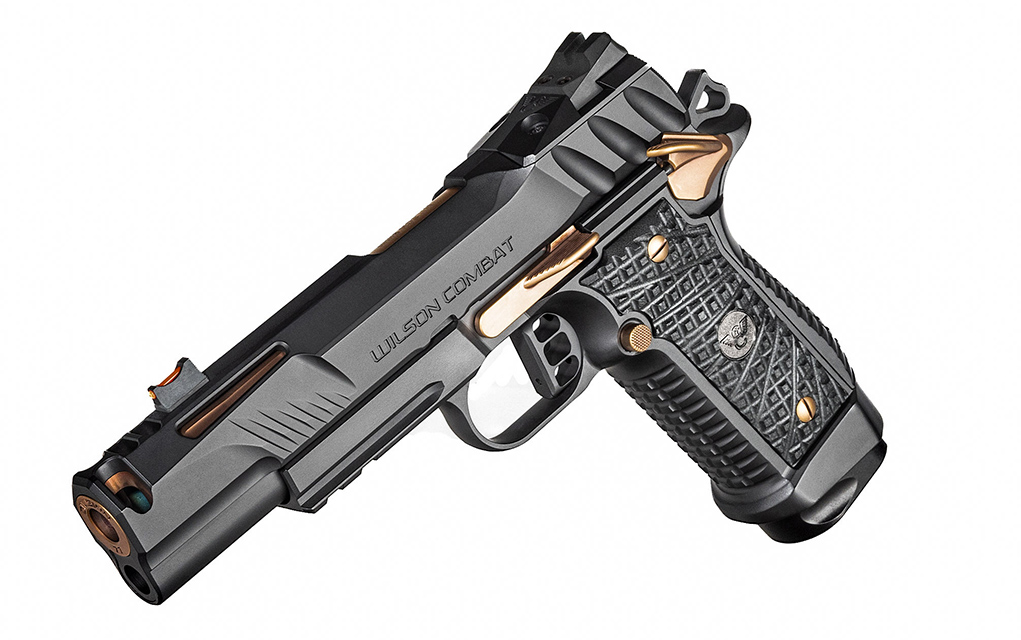
Division 77 has a very specific mission: to offer a revolutionary gun series that provides Wilson Combat’s R&D division with the latitude to push innovational boundaries, while also paying homage to the standards Wilson pioneered with 1911 design in 1977. You could look at Division 77 as the Skunkworks of Wilson Combat, and the P1—Project 1—pistol is the first Division 77 gun.
Wilson Combat Division 77 Project 1 Specs:
- Chambering: 9mm Luger
- Action: Single Action
- Trigger Pull Weight: 3.25 pounds, as tested
- Capacity: 18+1, ships with three magazines
- Barrel Length: 5 inches
- Weight: 33.8 ounces (unloaded), 41.5 ounces (loaded)
- Overall Length: 8.7 inches
- Height: 5.5 inches
- Finish: Armor-Tuff and PVD
- Sights: Wilson Combat Battlesight rear, fiber-optic front, multi-platform optics cut
- Accessories: Carry bag or carry bag and gun box, replacement fiber optic, optics mount pins (challenge coin and metal box comes with first 100 pistols)
- MSRP: $3,995, ($4,295 with box)
The Details
The foundation for the new D77 P1 pistol is Wilson Combat’s EDC X9 2.0 pistol, which I consider one of the best self-defense carry pistols ever created. The P1 elevates the EDC X9 to make it the ultimate solution for capacity, speed, accuracy and reliability. With the P1, I think there are four noteworthy innovations that are important, and I’ll start with recoil control.
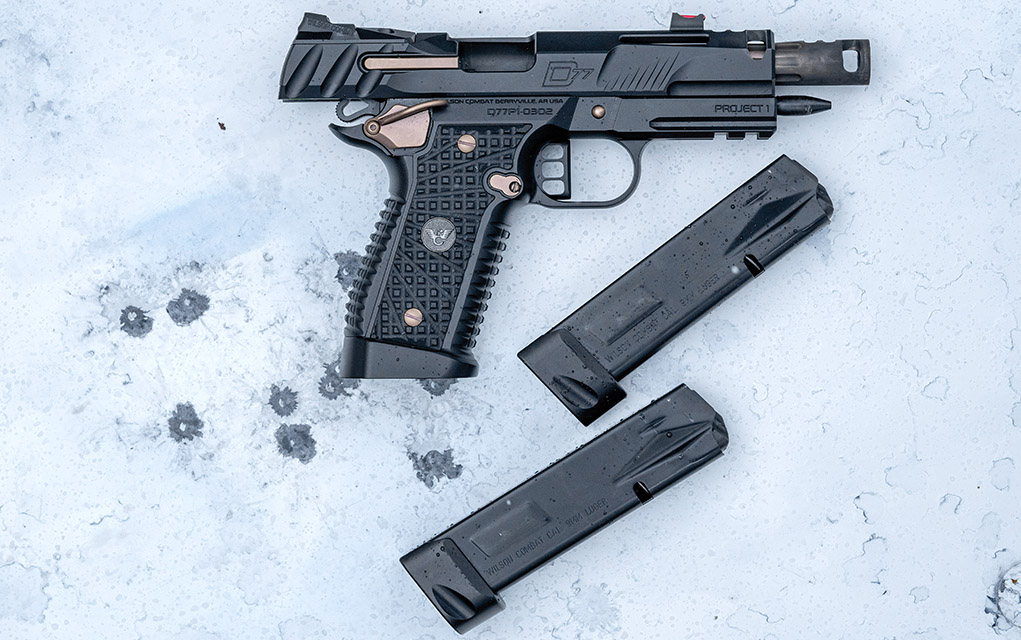

Wilson Combat used an all-new Dynamic Recoil Analysis System (DRAS), which is a state-of-the-art testing device designed to measure and analyze pistol recoil with unprecedented exactness to help them tune the recoil impulse of the P1. As opposed to peak recoil measurement, this system relies on 2,000 pressure data points within a 350-millisecond window. The data it provides represents a true recoil pressure curve. Compared to the standard EDC X9, the P1 reduces the recoil impulse by an astounding 42 percent. This substantial recoil reduction comes from a proprietary barrel and slide porting system.
The next innovation is a new optics cut on the slide. This cut utilizes an all-new and extremely innovative pin system that allows shooters to seamlessly mount any reflex sight with an RMR, RMSc or DeltaPoint Pro footprint. The cut is also at the rear of the slide for unobstructed chamber access and optimally positions SROs and longer reflex sights. The pistol ships with a plate that has an integrated Wilson Combat Battlesight rear sight. Remove this plate with two screws and then the reflex sight mounts directly to the slide. Small metal disks/pins allow this cut to interface with the various sight footprints.
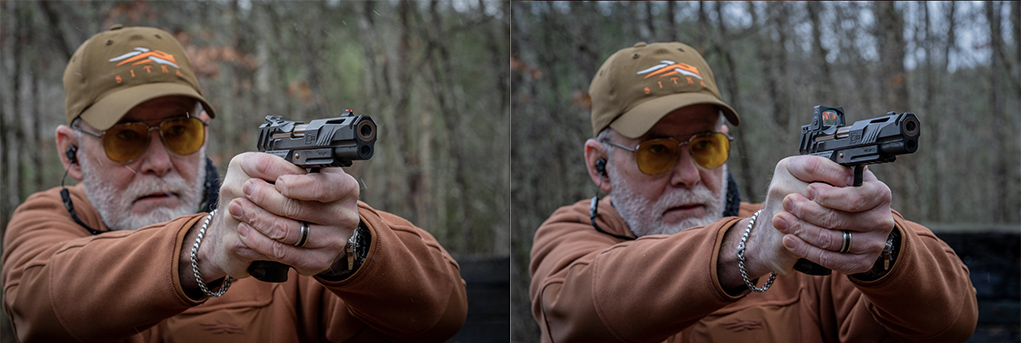

The next innovation is Wilson Combat’s Advanced “RPG” Guide Rod, which is a longer, one-piece guide rod that enhances reliability and ease of use. Its smaller diameter and tapered profile let it tilt out of the slide to make takedown and reassembly easier. (The guide rod can be removed without removing the reverse plug.) The longer shaft of the guide rod increases recoil spring reliability and life.
Simply put, it’s a better mouse trap.
And, finally, Wilson Combat has crafted an integral big-mouth magwell to the compact-sized aluminum X-Frame, and then they added reliability enhanced frame rails and an accessory/light rail. The gaping magwell/grip extension accepts an 18-round magazine with a newly configured base pad that has precisely machined grooves on both sides to help conduct faster and smoother magazine changes. Altogether, the magwell and magazines will help you reload the P1 in competition or in other high-stress situations … faster.
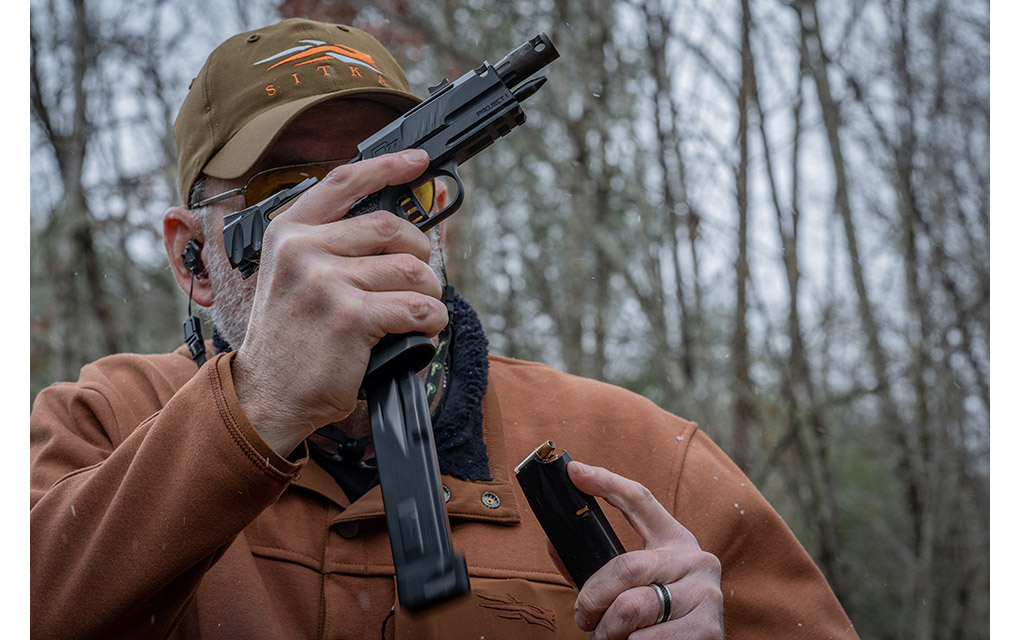

Everything else about the P1 is much the same as the EDC X9 2.0. Except—Wilson Combat finishes the P1 with black Armor-Tuff, and the barrel, barrel link, link pin, slide stop, magazine release, grip screws and ambidextrous thumb safety all have a copper PVD coating. This makes for an attractive contrast that creates a pistol that’s as beautiful as it is functional.
The Shooting
I prefer conventional sights to a reflex sight on a personal protection pistol. I’m not saying it’s the best way—it’s just my way. However, to evaluate the P1, I mounted a Trijicon RMR. This allowed me to work with the new mount system that utilizes little metal disks that interface with the slide and the reflex sight you want to mount.
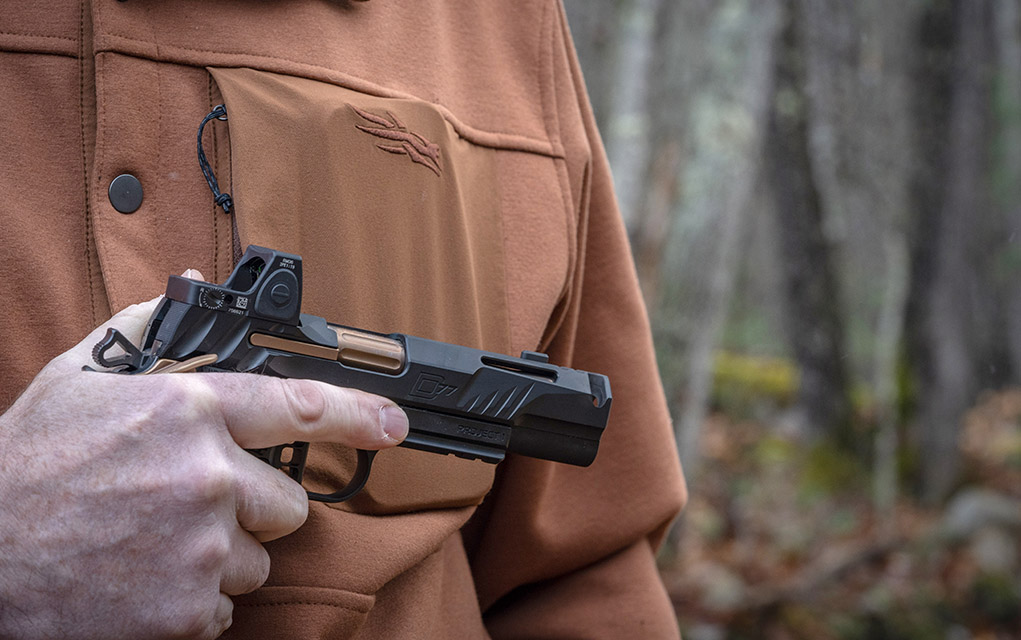

The system is nothing short of ingenious, because it’s hillbilly simple and allows you to choose between a much wider variety of reflex sights. While zeroing the sight, I was amazed at how comfortable the P1 was to shoot. Granted, a 33-ounce 9mm pistol isn’t known for abusive recoil, but shooting the P1 was like shooting a 33-ounce .380 Auto.
I evaluated five loads in the P1 for precision from the bench at 15 yards. It included a mix of practice and carry ammunition. Overall, the pistol averaged 0.85 inch for 15, five-shot groups from a sandbag rest. Wilson Combat guarantees 1 inch or better groups at 25 yards, and I have no doubt that in the right hands—and in good weather—this pistol is fully capable of delivering on that promise.
My range session occurred in the middle of an arctic blast. In total, I fired 400 rounds of various munitions through the P1 and didn’t experience a single stoppage.


I also did a bit of distance shooting with the P1 with the Trijicon reflex sight installed. Silhouette targets at 100 yards weren’t a problem, and about half the time I was ringing an 8-inch steel plate at that distance. But for most of the test-fire process, I removed the reflex sight and shot the pistol with the open sights. Running the gun through the Forty-Five Drill and Step Back Drill, which are my standard evaluation drills for handguns, I recorded the best scores on both that I’ve managed with any handgun I’ve ever tested.
Wilson Combat Division 77 Project 1 Shooting Results
| LOAD | MV | ME | SD | PRECISION |
| Lehigh Defense 115-grain CF+P | 1,142 | 333 | 8.3 | 0.78 |
| Federal 124-grain Tactical Hydra-Shok | 1,098 | 332 | 11.1 | 0.86 |
| Wilson Combat 125-grain HAP | 1,046 | 304 | 11.3 | 0.71 |
| Federal 115-grain FMJ American Eagle | 1,190 | 362 | 10.4 | 0.88 |
| Speer 147-grain G2 | 988 | 319 | 24.8 | 1.02 |
The Verdict
I only had one complaint, and it’s that there’s no provision for co-witnessing sights when running a reflex sight. Of course, selecting a reflex sight like the Sig Sauer RomeoZero with an integral rear sight notch solves that. Alternatively, and better yet, just get a Leupold DeltaPoint Pro and add the CQ DeltaPoint Pro adjustable iron sight accessory. Problem solved.
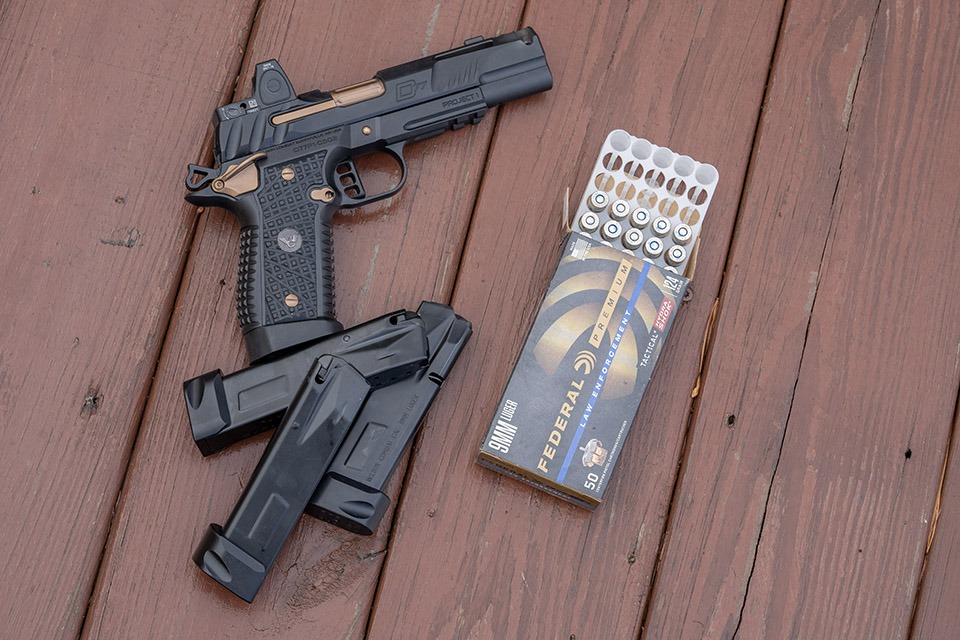

Aside from that, if the ultimate in speed, accuracy, capacity and reliability are your primary concerns with a pistol, the new Division 77 P1 is likely the best option currently available. The P1 holds 18+1 rounds and the large magwell and magazine base plates make it easy/fast to load. It offers dime-splitting precision and gives you the option of fixed sights and a wide variety of reflex sight options. It’s fast, easy to field strip and assemble, comfortable to shoot, and you can hammer the hell out of a target with minimal muzzle rise.
It’s also a damned fine-looking pistol, and while looks don’t make a pistol perform any better, they do enhance pride of ownership.
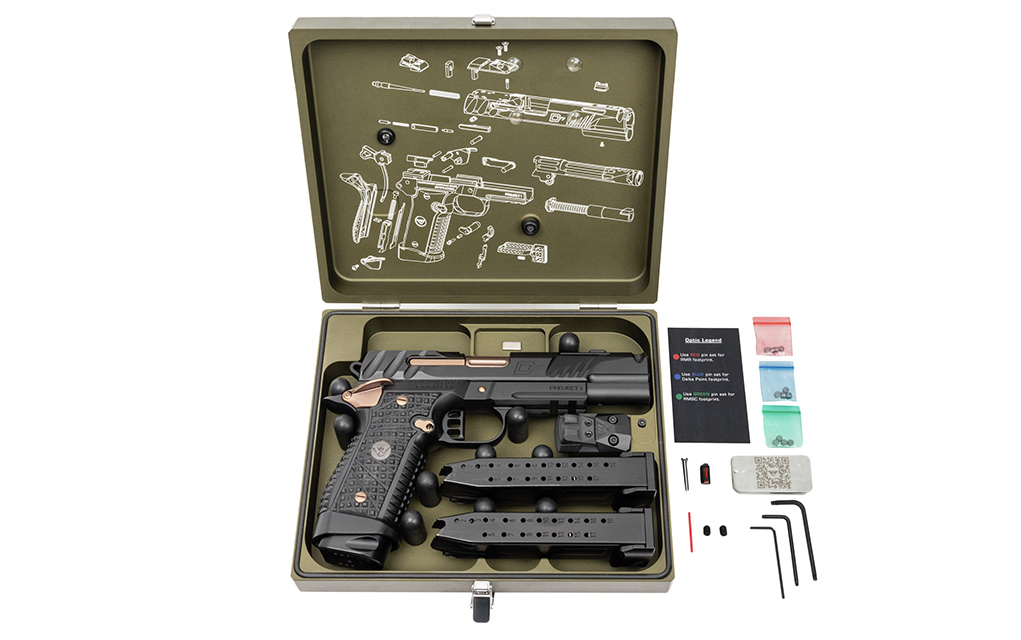

Granted, not everyone can afford a Wilson Combat pistol; I had to save for a while to get my EDC X9. And you could also buy a box of Glocks for the price of the P1, but you cannot do the things you can do with a P1 with any Glock pistol. Wilson Combat has elevated the bar with the P1, and I’m anxious to see what’s next in their Division 77 line.
Pros
- High capacity
- Fast to reload
- Extremely accurate
- Very controllable
Cons
- No provision for co-witnessing iron sights when using a red dot
- Very expensive
Editor’s Note: This article originally appeared in the February 2025 issue of Gun Digest the Magazine.
More Handgun Reviews:


Next Step: Get your FREE Printable Target Pack
Enhance your shooting precision with our 62 MOA Targets, perfect for rifles and handguns. Crafted in collaboration with Storm Tactical for accuracy and versatility.
Subscribe to the Gun Digest email newsletter and get your downloadable target pack sent straight to your inbox. Stay updated with the latest firearms info in the industry.
Read the full article here





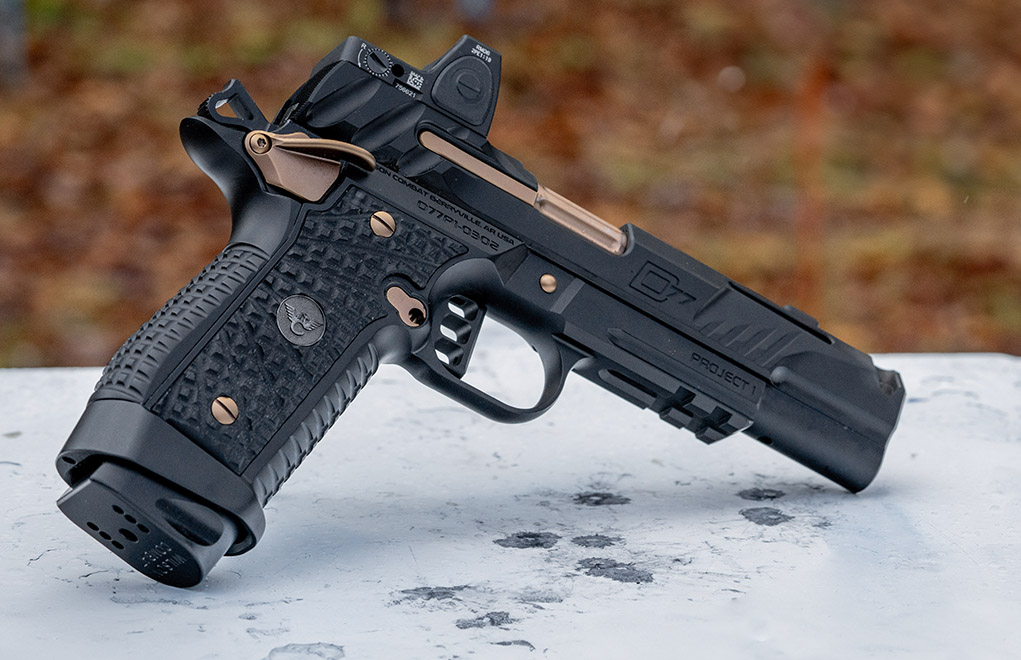









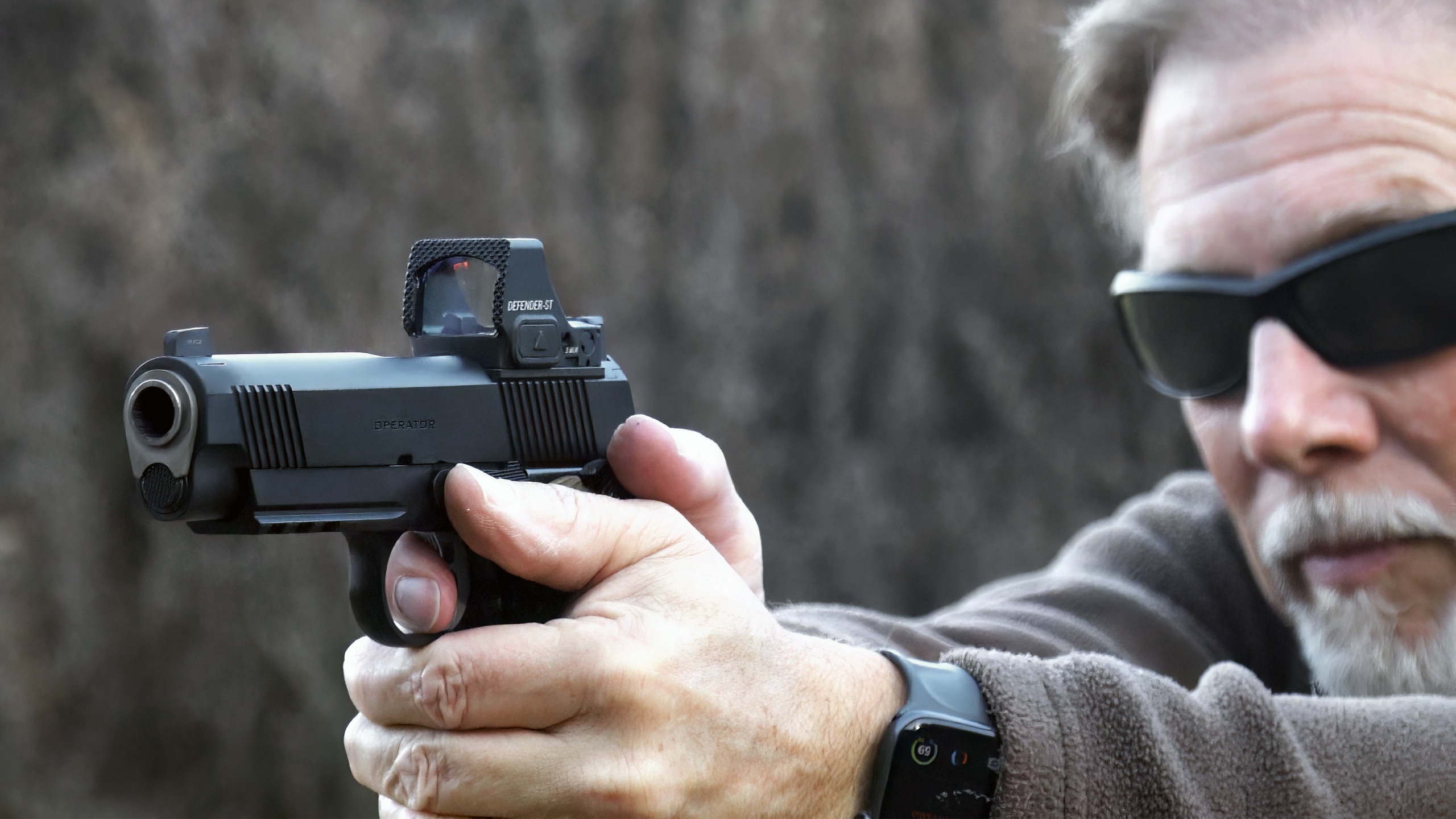
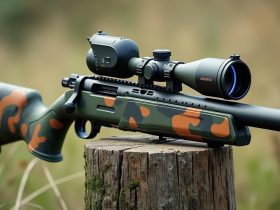

Leave a Reply